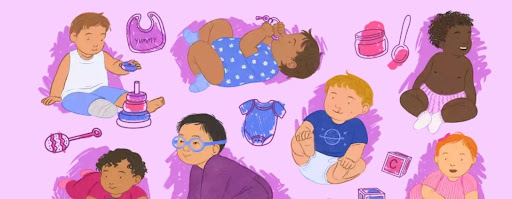Infant Mortality in India
Infant Protection Day is observed annually on November 7th. It’s a special day dedicated to raising awareness about the safety, protection and healthy development of our little ones. As parents, caregivers, and members of society, we all have a responsibility to ensure that our babies are given the best start in life, and that means keeping them safe from harm and promoting their overall well-being. In this article, we will look at the trends and causes of infant mortality in India. We will also explore the importance of sex education in combating high infant mortality rates.

Trends of Infant Mortality in India
Despite India having the world’s highest neonatal death rate (43 per 1000 live births), recent data from The Sample Registration System (SRS) Statistical Report 2020 indicates a decline in infant mortality. Improved healthcare infrastructure, better access to services, and maternal and child health programs contribute to this positive trend. However, the rate of infant mortality is still considerably high in India.
What are the factors that contribute to the high infant mortality rates?
Poverty: Poverty is a major factor that influences the rate of infant mortality in India.
Malnutrition: Malnutrition can lead to low birth weight, which is a leading cause of infant mortality in India
Lack of healthcare facilities: Lack of healthcare facilities is a significant issue in rural India. Many primary health centres lack facilities such as specialized doctors, beds, clean water, bathrooms, etc.
Lack of immunization.
Poor sanitation: Poor sanitation can lead to the spread of diseases that can cause infant mortality, such as diarrhoea and pneumonia.
Lack of awareness about healthcare: Lack of awareness about healthcare is another cultural factor that contributes to high infant mortality rates in India.
Some other causes-
Place of childbirth: Many women in India give birth at home. Often homes are not equipped with proper facilities. This can increase the risk of infant mortality.
Traditional birth practices: Traditional birth practices, such as delayed cord clamping, can also contribute to high infant mortality rates in India. Delayed cord clamping can lead to an increased risk of neonatal anaemia and hypothermia.
Gender discrimination: Gender discrimination is another cultural factor. Female infants are more likely to die than male infants due to neglect, malnutrition, and other factors.

Impacts of Sex Education on Infant Mortality Rate
Improved maternal and child health practices: Sex education enhances maternal and child health by promoting proper nutrition, hygiene, and immunization. Educated mothers are more inclined to seek prenatal care, give birth in healthcare facilities, and adopt healthier behaviours.
Reduced gender discrimination: Sex education can help reduce gender discrimination and promote gender equality. Educated individuals are more likely to challenge traditional gender roles and promote gender equality, which can help reduce discrimination against female infants.
Improved access to healthcare: Sex education enhances healthcare access by raising awareness and encouraging timely medical care, contributing to lower infant mortality rates.
Reduced fertility rates: Sex education lowers fertility rates through family planning, and fostering smaller families. This ensures parents adequately provide for their children, offering more individual attention and care, thereby reducing infant mortality rates.
Author

